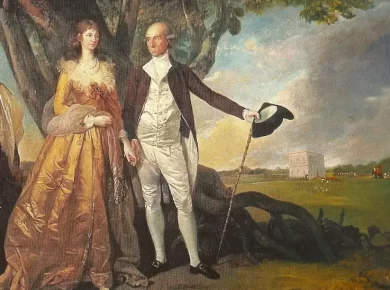Browsing Category
Modern India History
Modern India History (1857–Present)
Modern Indian history is a tale of transformation, marked by the struggle for independence, social and political change, and the emergence of a nation on the world stage. The period from 1857 to the present has been shaped by colonial rule, the Indian independence movement, the partition, and post-independence developments. Let’s explore key events and phases that have defined modern India.
1. British Colonial Rule (1857–1947)
British colonial rule in India began in the early 17th century but became formalized under the British Crown after the Indian Rebellion of 1857, also known as the First War of Indian Independence or the Sepoy Mutiny. While the rebellion was unsuccessful, it marked the beginning of the end of direct Mughal and traditional Indian rule and the rise of a national consciousness.
a) The British East India Company
Before 1857, the British East India Company controlled most of India’s territories. The company was given control over trade, revenue collection, and law enforcement, leading to its widespread influence.
b) The 1857 Rebellion
The revolt of 1857 was a significant, though unsuccessful, uprising against British authority. Though primarily a military rebellion led by Indian soldiers (sepoys), it ignited widespread resentment against British rule. Following the revolt, the British government dissolved the East India Company and took direct control of India, marking the beginning of the British Raj.
2. National Awakening and Reform Movements (Late 19th Century)
In the late 19th century, India saw the rise of intellectual, social, and political reform movements aimed at improving society and challenging British colonial rule.
a) The Rise of Nationalism
The late 19th century saw the emergence of Indian nationalism, with movements like the Indian National Congress (INC), founded in 1885. Early leaders like Dadabhai Naoroji, Gopal Krishna Gokhale, and Lala Lajpat Raiadvocated for Indian rights and self-rule.
b) Social and Religious Reforms
Social reformers like Raja Ram Mohan Roy, Ishwar Chandra Vidyasagar, and Swami Vivekananda campaigned against social evils such as sati, child marriage, and caste discrimination. The Brahmo Samaj, Arya Samaj, and Theosophical Society played pivotal roles in promoting social change and modernizing Hinduism.
3. The Struggle for Independence (1900–1947)
The early 20th century was marked by the intensification of the Indian independence movement, which sought to rid India of British colonial rule.
a) The Partition of Bengal (1905)
In 1905, the British partitioned Bengal, one of the most significant regions in India, to divide and rule. The move angered Indian nationalists and led to widespread protests. The partition was reversed in 1911, but the event played a crucial role in galvanizing the independence movement.
b) The Rise of Gandhian Leadership (1915–1947)
Mahatma Gandhi emerged as a central figure in the Indian independence movement after returning to India from South Africa in 1915. Gandhi’s philosophy of non-violence (ahimsa) and civil disobedience led to mass movements and protests across India.
- Champaran (1917): Gandhi led the Champaran movement in Bihar, where he successfully fought for the rights of indigo farmers who were being exploited by British planters.
- Non-Cooperation Movement (1920–1922): Gandhi called for a boycott of British goods, services, and institutions, which saw widespread support across India.
- Salt March (1930): In 1930, Gandhi led the famous Salt March to protest the British monopoly on salt production and taxes. This act of civil disobedience galvanized the entire nation.
- Quit India Movement (1942): As World War II intensified, Gandhi and the INC demanded an immediate end to British rule. Despite massive arrests, the movement highlighted India’s demand for independence.
4. Independence and Partition (1947)
After decades of struggle, India gained independence on August 15, 1947, but the victory was marred by the tragic Partition of India into two nations: India and Pakistan. The partition led to widespread communal violence, mass migration, and the loss of countless lives. The division was based on religious lines, with Pakistan becoming a Muslim-majority nation and India remaining secular with a Hindu majority.
- Jawaharlal Nehru, the first Prime Minister of India, became the face of the new nation, guiding the country through its early years of independence.
- Sardar Vallabhbhai Patel, as the first Deputy Prime Minister and Home Minister, played a crucial role in integrating the princely states into the Indian Union.
5. Post-Independence India (1947–Present)
Since independence, India has undergone dramatic political, economic, and social changes.
a) The Constitution of India (1950)
On January 26, 1950, India adopted its Constitution, making it a republic. The Constitution, drafted by Dr. B.R. Ambedkar and the Constituent Assembly, is the longest written constitution in the world. It provided for a democratic system of governance, guaranteeing fundamental rights to citizens.
b) Early Years of Independence (1947–1960s)
In the first two decades after independence, India focused on nation-building, economic development, and social reforms. Nehru’s vision of a mixed economy led to the creation of public sector industries and five-year plans for economic growth. The Indian National Congress (INC) dominated the political scene during this period.
- Green Revolution: In the 1960s and 1970s, the Green Revolution led to an increase in agricultural productivity, especially in Punjab and Haryana.
- China-India War (1962): India’s relations with China soured in 1962, leading to a short but impactful border war.
c) Economic Liberalization (1991)
In 1991, under Prime Minister P.V. Narasimha Rao and Finance Minister Dr. Manmohan Singh, India embarked on a major economic liberalization process. This included devaluing the rupee, reducing import tariffs, and opening up the Indian economy to foreign investments. The reforms have had a profound impact, leading to rapid economic growth, the expansion of the technology sector, and India’s integration into the global economy.
d) Political Landscape
India has witnessed multiple shifts in political power, with the INC ruling for several decades after independence. Over time, regional parties, coalitions, and new political forces like the BJP (Bharatiya Janata Party) have gained prominence.
- The BJP, led by figures like Atal Bihari Vajpayee and Narendra Modi, emerged as a dominant force in Indian politics in the late 20th and early 21st centuries.
- India continues to be a democracy with regular elections, a multi-party system, and a vibrant civil society.
e) Social and Cultural Changes
India has undergone significant social and cultural transformation since independence.
- Caste and Social Reforms: The Indian government has worked to abolish untouchability and promote social equality through affirmative action policies (reservations). However, caste-based discrimination still exists in some parts of the country.
- Women’s Rights: There has been progress in women’s rights, with laws ensuring gender equality, but challenges like violence against women and limited access to education and healthcare remain.
- Technological Advancements: India has emerged as a global hub for information technology (IT), with cities like Bengaluru becoming known as “Silicon Valley of India.”
f) Challenges and Future Prospects
India faces several challenges as it moves forward into the 21st century:
- Poverty and Inequality: Despite progress, poverty remains widespread, and economic disparities persist between urban and rural areas.
- Environmental Concerns: India faces significant environmental challenges, including air pollution, water scarcity, and deforestation.
- Geopolitical Issues: India’s relationship with its neighbors, especially Pakistan and China, remains complex, and security concerns persist.
Conclusion
Modern India’s history is a tale of remarkable transformation, from colonial oppression to independence, and from a newly independent nation struggling with social and economic challenges to a global player with a rapidly growing economy. India’s journey is a complex one, marked by both triumphs and struggles, and its future will continue to shape the global landscape.


